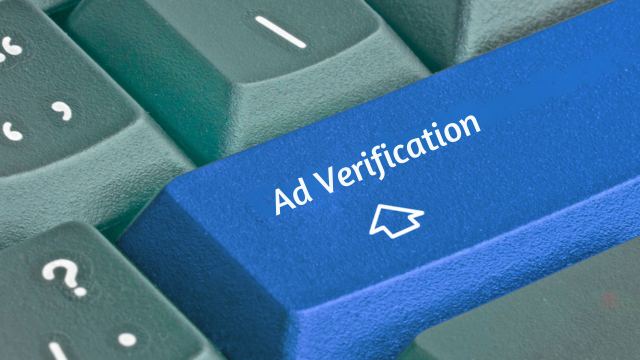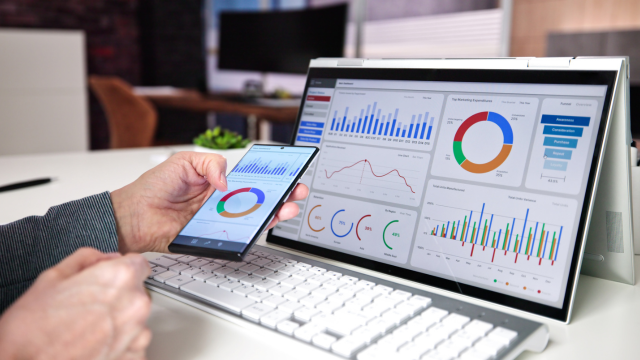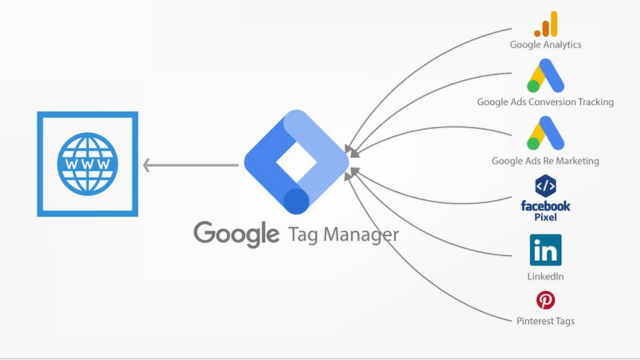Ad Verification in programmatic advertising is an absolute must. Think of it like having referees during a soccer match. Without them, it can become chaos—unfair play and confusion abound. Tools like IAS (Integral Ad Science) and DoubleVerify step in as those referees, ensuring fair play in the advertising space by managing fraud, keeping your brand safe, and making sure your ads reach the right audiences in the right context.
This detailed guide will share the best practices you can employ to implement IAS and DoubleVerify effectively. Whether you’re just starting or looking to refine your strategies, we’ll walk you through pre-bid verification, post-bid ad verification, and everything in between to ensure programmatic brand safety, ad fraud prevention, and efficient ad spend.
Why Verification Matters in Programmatic
Why is verification so important in programmatic advertising? Imagine running a campaign that unknowingly serves ads on bot-driven websites or pages with content harmful to your brand’s reputation. Without robust verification systems, you’re left vulnerable to wasted ad spend, brand safety risks, and poor ROI.
This is where tools like IAS and DoubleVerify come in. These technologies act as safeguards, ensuring the right ads get served in the right places while filtering out fraudulent impressions, unsafe content, and low viewability placements. Ultimately, they keep your campaigns efficient, safe, and effective, giving your brand the confidence it needs to succeed in today’s highly competitive digital space.
Meet the Main Players: IAS & DoubleVerify
What is IAS?
Integral Ad Science, or IAS for short, specializes in ensuring your ads are served as intended. It verifies that actual humans are viewing your ads (no bots, please!), that they’re placed alongside brand-safe content, and that they’re being seen—aka viewability verification. IAS focuses on quality and reliability, ensuring key aspects of your campaigns are on track.
IAS is particularly known for its IAS Quality Sync feature, which allows you to synchronize your brand safety settings seamlessly across pre-bid and post-bid environments.
What is DoubleVerify?
DoubleVerify (DV) is another top contender in the ad verification space. It offers a wide range of services, including pre- and post-bid verification, fraud prevention, contextual brand suitability checks, and transparent reporting.
DV’s Authentic Brand Suitability tool stands out—it enables advertisers to customize contextual safety parameters to ensure only the right impressions are purchased. With DV, you can see everything from campaign viewability to supply path transparency and identify where exactly your ad spend makes an impact.
Pre-Bid vs. Post-Bid: Choosing Your Strategy
Both IAS and DoubleVerify allow implementation at two pivotal stages—before bidding (pre-bid) and after impressions have been served (post-bid). Understanding their pros and cons can help you choose the right approach—or decide to use both!
Pre-Bid Filters
Pre-bid verification is your chance to block risky inventory before it’s purchased. This proactive approach allows you to weed out low-quality impressions, unsafe placements, or fraudulent activity, meaning your campaign doesn’t waste money from the get-go. Pre-bid tools save time and improve efficiency by creating a more airtight bidding process.
However, pre-bid isn’t foolproof. It might occasionally flag actual valuable placements as risky, which is why fine-tuning your filters is key.
Post-Bid Verification
Post-bid verification comes into play after your ads are served. It allows you to audit results, flag potential safety or viewability issues, and even blacklist specific publishers for future campaigns. While it’s great for analyzing overall performance, the drawback is that ad spend has already occurred. However, this doesn’t mean wasted spend is inevitable—it’s simply part of learning and improving campaign strategies.
For best results, combining both pre- and post-bid approaches is often the golden ticket.
Step-by-Step Implementation Guide
Integrating IAS and DoubleVerify into your programmatic setup isn’t as daunting as it might seem. By following these targeted steps, you’ll be up and running in no time.
Align Brand Safety Rules
Start by establishing clear brand safety guidelines. What’s unacceptable for your brand? Be specific about categories (e.g., adult content, fake news), content risks, geographical locations, and even languages that match your audience. Both IAS and DoubleVerify provide customizable safety profiles based on these criteria.
Activate in DSP
Next, implement the settings directly in your demand-side platform (DSP). Platforms like DV360, The Trade Desk, or others usually allow you to select verification tools like IAS or
DoubleVerify while defining your risk thresholds at the campaign or line-item level.
Sync Pre-Bid & Post-Bid Settings
This is where IAS Quality Sync or DV Authentic Brand Suitability come into play. Synchronizing your brand safety rules across different stages ensures that pre-bid filters and post-bid verification validate the same standards, creating a cohesive system.
Tag Creatives Correctly
When using IAS and DoubleVerify, remember to tag your ad creatives appropriately—wrappers or server-side tags must match the format your DSP or SSP supports. Missteps in tagging often lead to broken tracking data or underperforming campaigns.
Test First, Launch Slow
Launch gradually! Start with a smaller spend, monitor reports and dashboards, assess how pre- and post-bid systems interact, and tweak your filters as needed. Once confident, scale up with a larger budget.
Monitor & Optimize: Staying on Track
Once your campaigns are live, it’s crucial to stay proactive. IAS and DV offer powerful tools for monitoring and optimizing in-flight campaigns.
Use Dashboards & Reports
Regularly check your verification dashboards for insights like flagged placements, blocked impressions, viewability rates, fraud warnings, and contextual brand suitability metrics. These reports provide clarity on where your ad spend is making the most impact—or going to waste.
Tune Your Filters
Filters aren’t meant to be static. Depending on your results, adjust risk thresholds monthly or quarterly. For instance, you might relax viewability standards slightly to expand reach and scale, or refine contextual filters for specific audiences.
Reconcile Discrepancies
When discrepancies arise between IAS and DV metrics (happens more often with dual tagging setups), investigate immediately. It could result from platform-specific measurement variations or errors in tagging.
Common Implementation Mistakes to Avoid
No one likes setbacks, especially ones that can easily be avoided. Here are some common pitfalls—and how to steer clear.
Overblocking
Strict filters may cause more harm than good by significantly reducing reach. Instead of wholesale blocking, use precise settings like pre-bid and contextual filters to allow some flexibility while maintaining brand safety.
Mis-Tagged Creatives
One of the most frustrating errors in verification is poorly tagged creatives. Why? Because it renders all your efforts ineffective. Always follow specific platform guidelines for correct tagging formats.
Ignoring Performance Impacts
Verification tools add incremental costs to campaign CPMs. Monitor whether these extra expenses balance out with the increase in safety and ROI. Negligence can lead to wasted budget and unfavorable results.
Aligning Across the Ecosystem
IAS and DoubleVerify don’t operate in a vacuum. They need to harmonize with DSPs, SSPs, publishers, and other stakeholders to yield maximum results.
Sync Settings Across DSPs
Use tools like IAS Quality Sync or DV Authentic Brand Suitability to apply consistent settings and filters across all the DSPs in your arsenal. Uniformity prevents implementation gaps.
Coordinate with SSPs & Publishers
Transparent communication with SSPs and publishers ensures your direct deal campaigns align with the same IAS and DV standards. This synchronization results in fewer discrepancies and a better overall experience.
Demand Transparency from Supply Path
Use tools like Total Visibility or Supply Path Optimization to track which SSPs or ad exchanges provided inventory and evaluate verification performance. Mapping the supply path adds an extra layer of accountability.
The Future of Verification: What’s Next
The world of ad verification is rapidly evolving. Staying ahead of the curve is critical.
Contextual + AI-Based Suitability
Emerging AI technologies enable more advanced contextual assessments—detecting unsuitable content not just in text but across images, audio, and even video. This trend is especially helpful for brands advertising across multilingual regions.
Platform-Level Pre-Screening
IAS and DV are expanding their presence in walled platforms such as Facebook and YouTube, offering pre-screening tools to adapt their programmatic benefits directly to social campaigns.
Measurement Consolidation
As tools advance, expect tighter integrations where pre-bid and post-bid transparency are unified into consolidated reports. This streamlining simplifies optimization and enhances efficiency.
Final Checklist: Are You Ready?
Before launching your next campaign, run through the following checklist to ensure everything is good to go.
- Brand safety rules defined
- IAS/DV enabled pre- and post-bid in DSP
- Settings synced across platforms
- Creatives tagged correctly
- Testing done & logs monitored
- Budget includes verification overhead
- Ongoing reviews scheduled
With these steps in place, you’re ready to launch a campaign that’s not only effective but also brand-safe and fraud-free.
Have insights or tips from your experience using IAS or DoubleVerify? Share them in the comments below! And don’t forget to subscribe to our newsletter for more programmatic advertising strategies and updates.



